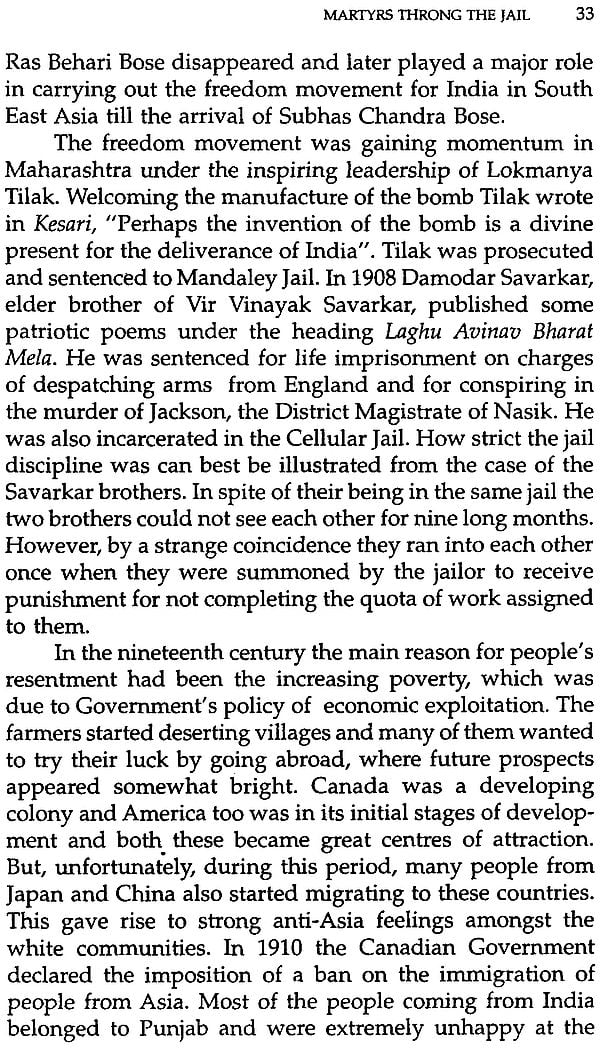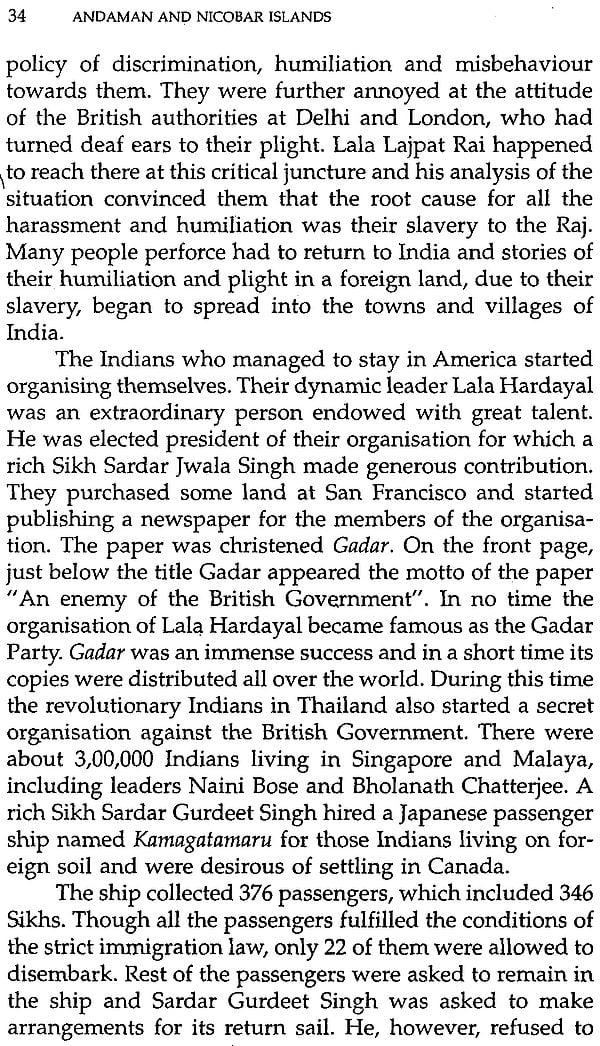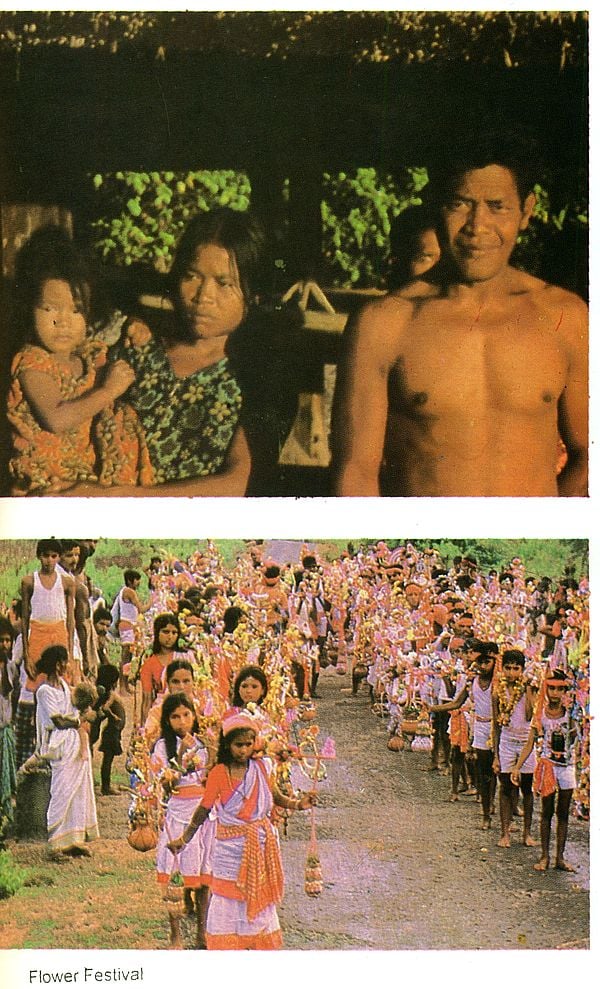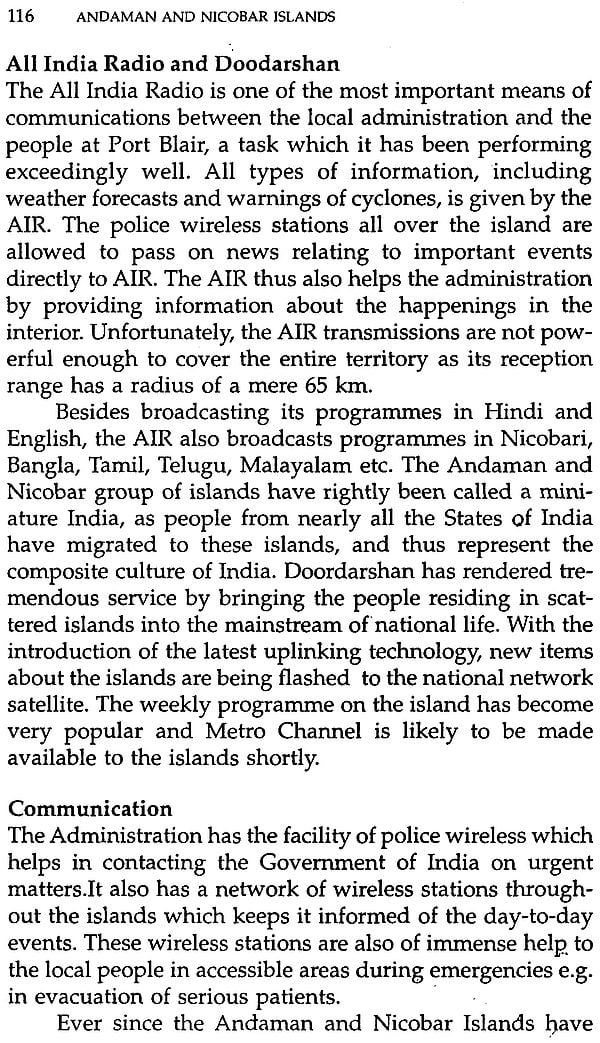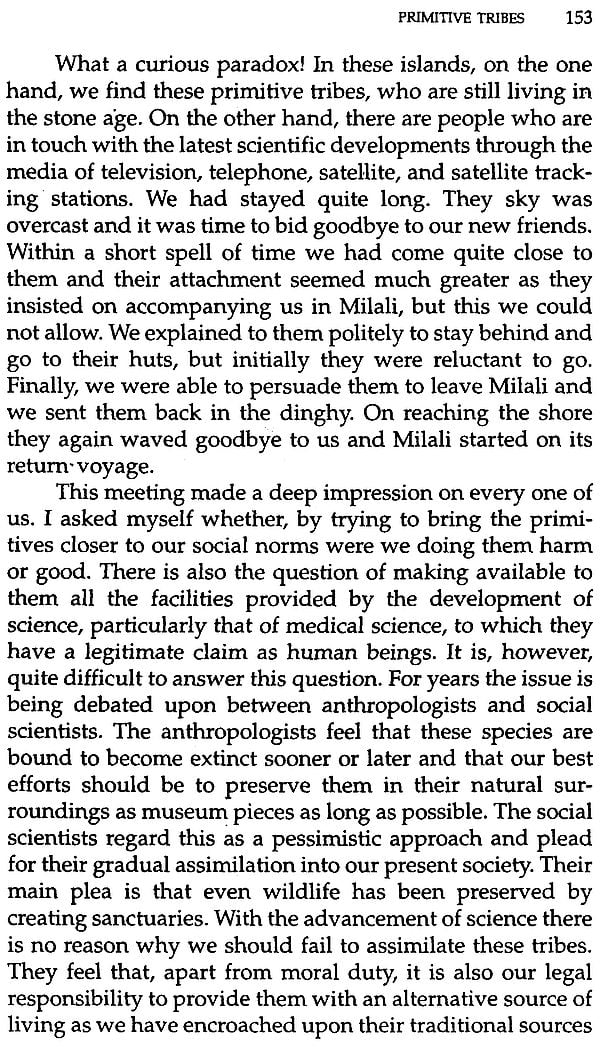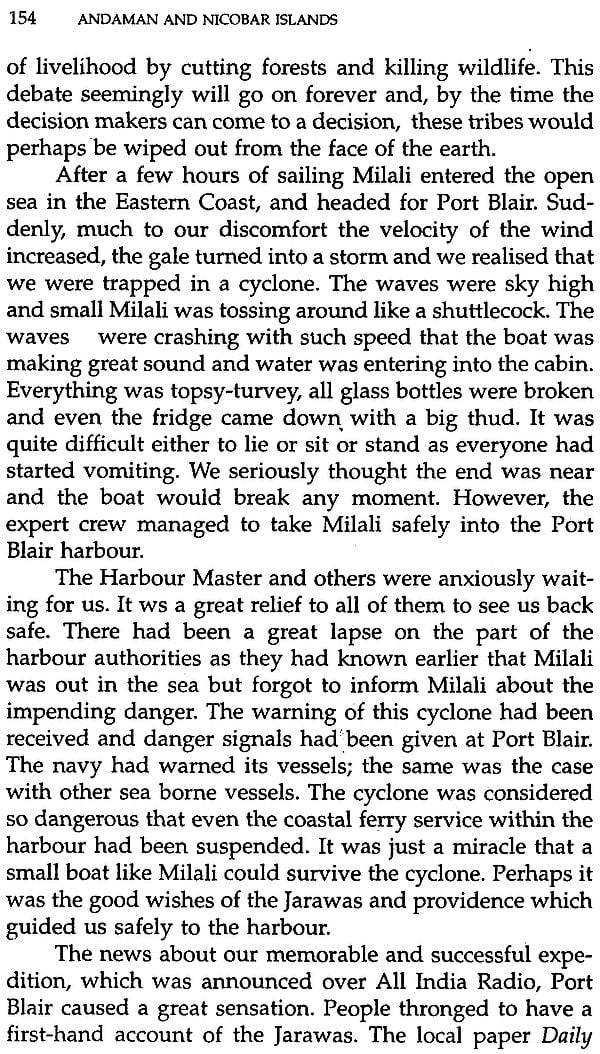
ANDAMAN AND NICOBAR ISLANDS
Book Specification
| Item Code: | IDD660 |
| Author: | B.R. TAMTA |
| Publisher: | National Book Trust, India |
| Language: | English |
| Edition: | 2000 |
| ISBN: | 9788123733159 |
| Pages: | 194(Color Illus: 15, Maps: 1) |
| Cover: | Paperback |
| Other Details | 8.5" X 5.4" |
| Weight | 260 gm |
Book Description
There are a few parts of our country which are as fascinating as the Andaman and Nicobar Islands and about which unfortunately so little is known. The author has successfully traced the gradual development of these islands which initially were a Penal Settlement for the freedom fighters of 1857 but have now turned into a tourist's paradise. This book provides a bird's eye view of the island's distinctive features and the customs and occupations of the simple primitive tribes as well as the present day development of the islands.
B.R. Tamta, who retired from the I.A.S. cadre, was Development Commissioner, Andaman and Nocobar Islands for four years. Earlier, as Commissioner of the Municipal Corporation of Delhi, he was able to give a face-lift to the capital. At present he is engaged in social and literary activities.
The name Andaman or, Kalapani (black waters) which sent a chill down the spine of the Indians for many years continues to hold awe and mystery. In 1977, after the fall of the Indira Gandhi government, I was transferred to Andaman and Nicobar Islands Administration as Develop- ment Commissioner. I was naturally somewhat worried about my entry into this part of the world.
When I landed at Port Blair airport, contrary to my apprehensions I found myself in the midst of a most beau- tiful lush green island which looked like a paradise. Over- whelmed with joy, I bowed my head to the Almighty for this kindness. Whenever I happened to visit the mainland people gathered around me, as if I had come from some other planet. They thought that in the Andamans there was black salt water to drink and people were just left to die on the island without any proper arrangements for food and shelter. They were astonished when I told them about the modern amenities of a city life available at Port Blair, the capital of the Andamans.
The Andaman and Nicobar Islands have played a tremendous tole in the freedom movement of India. The Penal Settlement was initially established for the prisoners punished for their participation in the great revolution of 1857, and later the Cellular Jail was constructed, where many freedom fighters were incarcerated. This has now been declared as a national monument. I wrote some articles about these islands which were published in the popular Hindi weekly 'Dharm Yug.'
To this day, people in the mainland have many mis- givings about these islands. Recently a person from the mainland, who had been posted in the Andamans, brought with him, 'among other things', a lantern with the hope of getting some kerosene oil locally. He was taken aback to see the electrified town of Port Blair with well decorated shops fully stacked with goods of the latest fashion. It is a pity that, while the people of India have a craze to visit foreign lands, they have very little knowledge about an important part of their own country.
The main object of this book is to give maximum information about these islands, particularly to give a glimpse of the life of the people living in these islands. How far I have been successful in my attempt, it is for the reader to judge. It is possible that at some places the reader may find some details rather superfluous, but in the con- text of these islands these were unavoidable.
I am specially grateful to the National Book Trust for persuading me to write this book. I am also grateful to the people of the Andaman and Nicobar Islands, who show- ered upon me immense love, affection and accepted me as a member of their family. One of the reasons for this special consideration may be the similarity between my posting to the islands and their forefathers' transportation, since in both the cases the victims were political sufferers. I am indebted to many friends who helped me to present this book in this form. I also express my thanks to my daughter Veena who rendered great help in this task.
I shall consider myself fortunate if the book is able to create a goodwill and interest among the people of India and abroad towards these islands.
| S.No | Title | Page no |
| Preface | vii | |
| I. | The Emerald Islands | 1 |
| II. | From the Harbour to the Cellular Jail | 11 |
| III. | Martyrs throng the Jail | 31 |
| IV. | Under Japanese Occupation | 44 |
| V. | Netaji's Visit | 64 |
| VI. | General Administration | 83 |
| VII. | Development Activities | 88 |
| VIII. | Social, Cultural and Political Life | 118 |
| IX. | Primitive Tribes | 147 |
| X. | A Tourist's Paradise | 164 |
| Bibliography | 183 |
